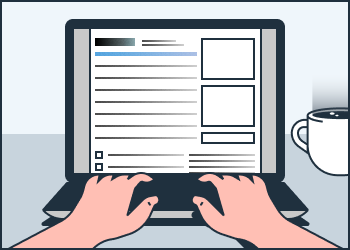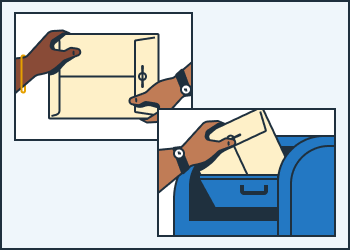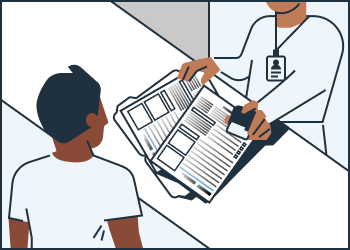Add costs and interest to what's owed
If you had to spend money trying to collect what the judge said the other side owes you, you can ask to have those costs added to what you're already owed. You can also have interest added.
Before you start
Document your costs
You'll need to file a written statement saying what you've spent and how much interest needs to be paid. The court doesn't keep track of this.
You only can add costs from the past 2 years
- You have 2 years from the time you pay a collection cost to add it to what's owed.
- Not all collection costs will be added. You can add what you paid the court, a government agency (like the sheriff's office or DMV), or a process server. Sometimes, the court will allow you to add attorney's fees.
You can add interest at any time while the judgment is active
Generally, any unpaid principal balance collects interest at 10%, or 7% if the debtor is a government agency. This general rule applies to any judgment against a business or government agency, or when the debtor owes $200,000 or more. It also applies to any judgment where the money is owed due to a tort or fraud, or judgments for unpaid wages or other money due to an employee.
Broadly, a tort is when someone does something, usually dangerous or careless, and it causes someone to get hurt or damages something they own. For example, if someone runs a red light and causes a car accident. Common examples are assault, battery, trespassing, or negligence.
A tort is not when someone breaks a contract. For example, when someone signs an agreement with a credit card company, but then does not make a payment they agreed to make. That is called a "breach of contract." It is not a tort.
If the balance owed is less than $200,000 and the money owed is related to medical expenses or personal debt, then an exception to this rule may apply. Otherwise, the general rule applies.
Limits on interest rates for some judgments related to medical expenses or personal debts
For any judgment entered or renewed on or after January 1, 2023, the interest rate on any unpaid balance is 5% if:
- The side that owes the money (the judgment debtor) is a person, not a business or government agency,
- The principal balance owed is less than $200,000 and related to a medical expense or is less than $50,000 and related to a personal debt, and
- The money owed is not due to a tort, fraud, unpaid wages, or other money owed to an employee
How to add costs and interest
-
Calculate costs and interest

Get together proof of your costs
Add up receipts or other records from fees paid to the court clerk or other places you had to spend money to collect (like the sheriff, county clerk, or process server). You can only add costs from the past 2 years.
Calculating interest owed
Calculating interest can be tricky, especially if the other side has made some payments because you calculate interest only on the amount that hasn't been paid.
You can use a San Diego Superior Court’s free online program (opens in a new tab) to calculate the amount due on a specific day. You input the judgment amount, date, and payment history, and the program does all the calculations for you. The calculator has the interest rate set at 10%.
If you want to calculate by hand instead, read the Information Sheet for Calculating Interest and Amount Owed on a Judgment (form MC-013-INFO) (opens in a new tab).
-
Fill out form

Fill out and put in what you added up in the last step into:
- Memorandum of Costs After Judgment (form MC-012) (opens in a new tab)
This tells the court what you've spent and what interest needs to be added.
-
Make a copy
Make 1 copy of the Memorandum of Costs to send to the other side.
-
Serve the Memorandum of Costs

Have someone 18 or older, not you or someone else involved in your case, hand-deliver or mail the copy of the Memorandum of Costs After Judgment to whomever owes you money. The person who mails is your server.
Your server must then fill out the proof of service on the second page of the original Memorandum of Costs After Judgment.
-
Make another copy with the Proof of Service filled out
Make 2 copies of the Memorandum of Costs After Judgment with the signed proof of service on the second page.
-
File the Memorandum of Costs

- File the original and 2 copies of yourMemorandum of Costs After Judgment.
- The court will process the paperwork, and return the 2 copies, stamped, to you.
- The court will keep the original papers for its file.
-
Wait for response
If the person who owes you money doesn’t file anything with the court saying they disagree, your Memorandum of Costs After Judgment is automatically approved.
If the other side files a Motion to Tax Costs, you will be served with a copy of the motion. If you disagree, you must file and serve your response at least 9 court days before the court date about the costs. A judge will decide if the costs and interest can be added.
Small claims collection
What's next?
After you have your costs and interest added, you can keep trying to collect what's owed. If the other side ends up paying you, you need to let the court know.

